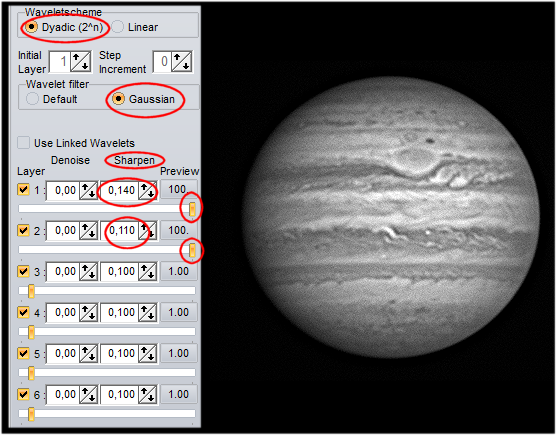
Leave the other options for the time being. If you have lots of poor frames or lots of very good frames you might adjust that to try to use as many good frames as possible whilst avoiding the bad ones. With this sort of graph I'd probably leave it somewhere near 50%. At this point you can decide how many frames to stack in the "Stack Options" box at the top right. The green one is the quality level with the frames re-ordered by quality. The grey lines are the quality of each frame in order. It will display the first frame in a new window:Ĭlick "2) Analyze" and AS!2 will scan the images to decide how good they are, producing a graph in the first window: The location is given in the output in the window on the right.Ĭlick "1) Open" and open the AVI file written by PIPP.

It saves its output in a new folder beneath the one you loaded the AVI from. Once that's done you're finished with PIPP. Once everything looks right, go to the "Do Processing" tab and click "Start Processing". This also gives an idea of the quality of my input data. If you've chosen too small a size you can go back and change it. There's clearly going to be enough room around the image, so I'm happy with that. Hit "Test Options" to get a window to show what the output should look like: Unless you know why you want to change them, I'd leave all the other options along for now. In the Processing Options tab I set the output size to be 250x250: As you can see above I had a 640x480 frame in the AVI. I just load the AVI and check the "Planetary" option to set appropriate defaults: PIPP allows me to crop this off and recentres the image to make the stacking faster and easier. This isn't strictly necessary, but because the tracking on my mount isn't that great I can't capture data from just a small area of the camera sensor and there's usually a fair bit of empty space around the image. The first thing I do is preprocess the AVI using PIPP. I've just never tried that for planetary imaging.

It is possible to use sequences of single images, too. non-lossy) codec however, you should be fine and the processing will be pretty much the same. As long as you have an AVI file saved using a sensible (ie. I used a 2x barlow with my ASI120MC camera to capture about 3000 frames over five minutes which is well within the limits imposed by Saturn's rotation. The sample I'm using is one of my own, taken using a 127 Mak on an EQ3-2 with the dual-motor add-on. I've ignored many of the options that you can get by without at first and glossed over a few things that you can pick up once you get into the swing of processing.
Jupiter and registax 6 tutorial how to#
This isn't meant to be an exhaustive explanation of how to go about stacking planetary images. A few days later than I imagined, I've got around to it. If you’re like I was then this video will give you a head start.Last week someone asked about a guide to stacking planetary images using AutoStakkert!2 (hereinafter known as AS!2) and I said I'd write something up. Finally I decided to put in the hours to see what all the controls do and then I was able to again start getting better and better images. Before that I found something that worked and stopped playing. In the video I show you things I learned by playing around for many hours. The RegiStax web site has some useful tips to get you started. RegiStax does not come with a user manual. Some people will use other tools such as PhotoShop or AstraImage for further processing. It seems that everyone uses them and for many people that is all they need. The wavelet tools in RegiStax are very popular.

I’m continually learning better ways and I am certain I will improve with more practice. Of all the things to learn about planetary imaging sharpening is the possibly the hardest thing to get right. I show how to use RGB Align, Gamma, and color saturation.

In the video I also point out several quirks of RegiStax. We apply wavelets while looking at the image on the screen and asking ourselves “How’s that?” I figure I might as well be seeing the proper colors while doing that. I do this first because wavelet sharpening is highly subjective. I use these to set the color and brightness before doing the wavelet sharpening using the controls on the left side of the wavelet tab. In this video I show how to use the Histogram and RGB Balance functions located on the right side of the wavelet tab. Something I found very helpful is this by Christophe Pellier.įinalize image processing with RegiStax 6. RegiStax has several useful tools for sharpening. If you open the stacked image with RegiStax 6 you will find yourself on the wavelet tab.


 0 kommentar(er)
0 kommentar(er)
